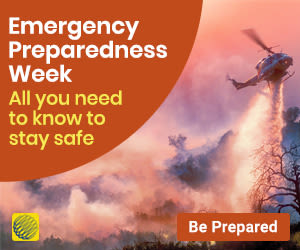Which glaciers will flood your home? New NASA tool can tell
Meteorologist/Science Writer
Friday, November 17, 2017, 7:09 PM - Sea levels are rising as our planet warms and glaciers around the world melt in response, and a new NASA tool can tell us exactly which glaciers are responsible for flooding our coastal communities, now and in the future.
For those of us living in coastal communities, the future is going to bring greater risks as sea level rise drives tides and storm surges higher, as well as farther inland.
Knowing exactly which regions are at greatest risk for this coastal inundation will help residents adapt to these changes, however the oceans' response to sea level rise is complex - some areas are rising, while others fall.

Sea level changes, between 1992 and 2017. Credit: NOAA Laboratory for Satellite Altimetry
With close to 20 major sources of meltwater from glaciers and ice sheets, around the world, and a complicated system of ocean circulations delivering that water, NASA scientists have devised a new simulation that can trace back the changes in sea level to these sources.
So, by running the new Gradient Fingerprint Mapping tool, on NASA Jet Propulsion Laboratory's Virtual Earth System Laboratory (VESL), anyone can see exactly which glaciers and ice sheets are impacting on their region of the world, and even break down the individual contributions to local sea level changes from each source.
The research that led to the creation of this tool was published this week in the journal Science Advances.
"This study allows one person to understand which icy areas of the world will contribute most significantly to sea level change (rise or decrease) in their specific city," Eric Larour, the project lead for NASA JPL's Ice Sheet System Model (ISSM) and lead author of the study, told CNN.
From the mapping tool, here is the sea level rise already measured at Halifax, NS, along with the top five individual contributors to that sea level rise:

Gradient Fingerprint Mapping tool simulation for Halifax, NS. The contribution of all sources is less than the total since some sea level rise is caused by thermal expansion of the water. Image Credits: NASA/JPL. Animation and labels by Scott Sutherland
Here is a similar animation showing sea level rise, and sources of the changes, for the west coast (Melville Island, BC):

Gradient Fingerprint Mapping tool simulation for Melville Island, BC. The contribution of all sources is less than the total since some sea level rise is due to thermal expansion of the water, as the oceans warm. Image Credits: NASA/JPL. Animation and labels by Scott Sutherland
It should be noted that, the case of Melville Island, the changes in glacier mass in Alaska actually has a negative effect on sea level rise for this region. This holds true for the other locations on Earth as well. Sea level rise at any port city is caused most by the glaciers and ice sheets that are farther away. The loss of ice at nearby glaciers and ice sheets actually causes a sea level drop.
This happens due to the changes in Earth's gravity field, as mass is lost from these immense sheets of ice. When the mass decreases, so does the gravitational pull of the ice on the water, and the water slumps back away from the shoreline. The effect is mostly overwhelmed by the contribution from other bodies of ice, but this negative contribution does have an impact on the overall sea level changes.



